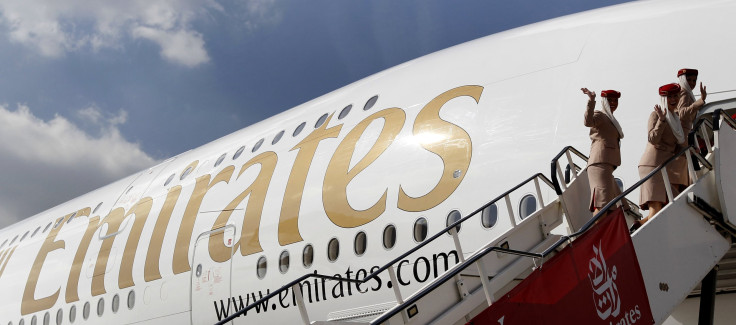Emirates Group Posts 13% Rise In Revenues As Passengers, New Aircraft Increase

The Emirates Group, which operates the world’s largest airline in terms of global traffic, reported a 13 percent annual increase in revenues to 42.3 billion UAE dirham ($11.5 billion) and a 4 percent rise in net profits to $600 million in the first six months of its current fiscal year ending on Sept. 30, aided by a rise in number of passengers and the addition of new aircraft to its fleet.
Emirates Airline, the group's carrier, which ferried 21.5 million passengers in the first half, which is a 15 percent annual increase, added 10 new aircraft to boost capacity by 16 percent, and clocked a net profit of $475 million. Dnata, the company’s cargo service, reported an 18 percent increase in revenues to $1 billion, with a 13 percent rise in net profits to $125 million.
“Our investments in the infrastructure of both Emirates and dnata continue to pay off and while we keep a close watch on managing our immediate business targets,” Sheikh Ahmed bin Saeed Al Maktoum, chairman and CEO of Dubai-based Emirates Airline and Group, said in a statement.
But, “high fuel prices, accounting for 39% of our expenditures, and the unfavorable currency exchange environment continue to eat into our profits,” Sheikh Ahmed, who is the uncle of Dubai’s ruler, Sheikh Mohammed bin Rashid Al Maktoum, added.
Emirates is considered one of the world’s most successful airlines, although its European rivals such as Deutsche Lufthansa AG (ETR:LHA) and British Airways Plc say it is buoyed by large state subsidies.
However, Emirates, which is wholly owned by the Dubai government, says that it receives no financial support or protection from the government and has been functioning purely as a commercial airline, competing under “the government’s unconditional open skies policy.”
The carrier added 10 wide-body planes, including six A380s, three 777s and one 777 freighter in the first half, and is set to receive 15 more aircraft, scheduled to be delivered by the end of the financial year, in March 2014. It now flies to 137 destinations in 77 countries, up from 126 cities in 74 countries in the previous year. The company’s workforce expanded by 11.7 percent annually in the first half to more than 75,800 employees worldwide.
In October, it was reported that Emirates is in talks with The Boeing Company (NYSE: BA) for an order of 100 to 150 redesigned 777X jetliners, which, if it materializes, would make it the largest-ever introductory single-order tally for Boeing, surpassing a 50-plane order worth $6 billion for the 787 Dreamliner in 2004 from Japan’s ANA Holdings Inc. (TYO:9202).
© Copyright IBTimes 2024. All rights reserved.






















